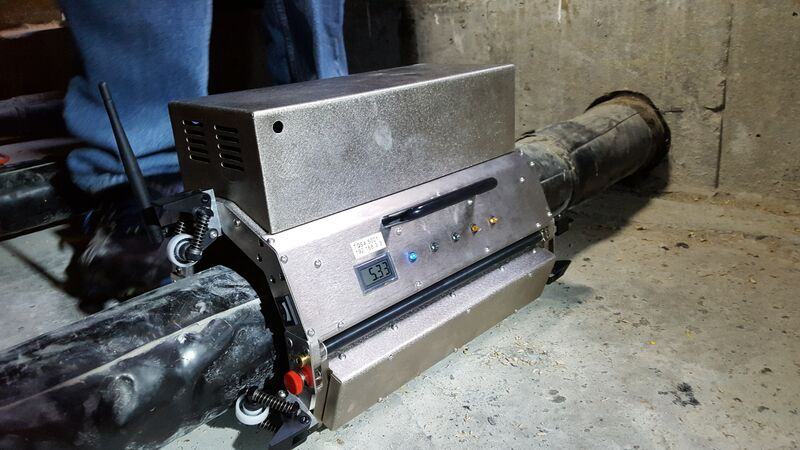Bridge Inspections Keep Our Infrastructure & Public Safe!
- Doug Thaler

- Jul 30, 2016
- 3 min read
Bridge inspections and evaluations are critical in maintaining our vital infrastructure assets by making sure that these assets are stable and can safely carry the loads and stress put on them at any point in time.
National Bridge Inspection Standards (NBIS) set minimum standards for the inspection and evaluation of highway bridges in the United States to ensure bridge safety.

These standards set requirements for type and frequency of bridge inspections, reporting requirements, personnel qualifications, organizational responsibilities, need for quality control and assurance. It also sets follow-up procedures to address critical findings resulting from those inspections. According to the National Bridge Inspection Standards, all fracture critical members in bridges require inspections at intervals not to exceed 2 years irrespective of their age, structural condition, design standards, details, etc. If a bridge is deemed to be structurally deficient than that inspection needs to be conducted every 12 months. For example Pennsylvania with 22,271 bridges has over 5,000 that are structurally deficient. The larger issue is that still today a majority of those inspections are visual and subjective in nature.
Bridge inspections play a major role in cost-effective bridge management by providing the data required to develop appropriate maintenance and asset management scheduling. All of these inspections, by federal mandate, require that the asset manager rate five major bridge components, these include the bridge deck, superstructure, substructure, channel & channel protections, and the culvert condition. Once this data is acquired it is used by the FHWA (Federal Highway Administration) for network-level condition assessment and the allocation of funds from the federal highway bridge program funds.
Most transportation agencies, asset managers and asset owners typically go beyond the NBIS and federal mandates to collect more information to support their bridge management programs.
The failure of the I-35 bridge in Minnesota in 2007 brought considerable public attention to the bridge inspection and evaluation programs. Following the I-35 bridge collapse, several studies have reviewed existing inspection

and evaluation programs. ASCE/SEI also formed an ad-hoc group jointly working with AASHTO (American Association of State Highway and Transportation Officials) to review highway bridge inspection and rating methods and practices used across the United States (results of this group’s recommendations were published in the January 2009 issue of the Journal).
Most of these studies generally concluded that highway bridge inspection programs currently in place ensure public safety. But many of these studies advocated use and development of advanced technologies to augment current bridge inspection and evaluation programs to increase safety and bridge management decisions. They also suggested using more rational, risk-based approaches to determine inspection intervals.
If you look at the inspection methods used today they seem at the very least outdated. Many of the bridge inspection methods the federal government recommends today were written 40 years ago. They are not only outdated but are wholly subjective in nature. If multiple inspectors went out and conducted the same inspection, you would most likely get multiple differing results. Forty years ago the technology didn't exist to inspect these assets properly and even though the technology certainly exists today the industry appears to be slow in adopting the technology to benefit them.
Budgets and bureaucracy prevents many of the larger engineering firms and government agencies from conducting extensive R&D. The Infrastructure Preservation Corporation "IPC" spent 7 years to develop the tools and a process to inspect infrastructure assets. This was done purely out of an entrepreneurial spirit to develop a better commercially viable process to bring the transportation inspection process into this century. IPC is one of the first companies today that has taken multiple bridge inspection processes and has engineered a new breed of robotic inspection equipment to create a comprehensive asset assessment system utilizing patented, proprietary non destructive testing equipment to perform a nondestructive evaluation and assessment of infrastructure assets. These processes are more accurate and much less subjective than previous methods.

IPC's technology acquires quantitative recordable data not obtainable by visual inspection from an engineer alone. They do this by deploying their patented robotic devices on specific parts of the assets to precisely test or inspect a particular component. Because the devices are robotic, they do not require lane closures or heavy equipment to operate. Inspections conducted in this manner are less expensive, safer to conduct, (all inspections can be conducted in daytime) are more accurate and will help to preserve and extend the life of our nations infrastructure. You can find out more about IPC at http://www.infrastructurepc.com.
Understanding the deterioration of bridge systems and components using the available bridge inspection data is essential for cost-effective bridge management through planning appropriate maintenance, rehabilitation, and replacement programs. Only with new technologies that offer quantitative results will we be able to rely on the data that will keep our public safe and allow for accurate budgeting and repair cycles.











































Comments